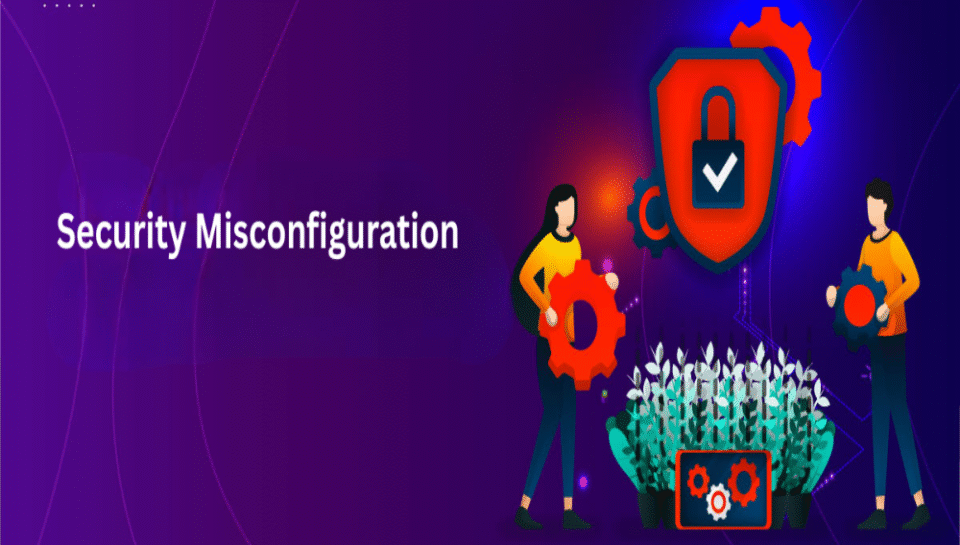
Define Security Misconfiguration and Its Consequences for Web Platforms
Introduction
In today’s digitally interconnected world, web platforms play a vital role in business operations, user engagement, and service delivery. With increasing cyber threats and ever-expanding attack surfaces, securing these platforms is more critical than ever. Among the most common and dangerous vulnerabilities listed in the OWASP Top 10 is security misconfiguration. Despite being preventable, security misconfiguration continues to be a prevalent issue across web applications, cloud services, and server environments. This article explores what security misconfiguration is, how it occurs, and the severe consequences it can have for web platforms.
Security Misconfiguration
Security misconfiguration refers to the improper setup of software, frameworks, web servers, databases, or cloud environments that inadvertently leave systems vulnerable to attacks. It involves failing to implement security hardening measures, leaving default credentials or settings enabled, exposing unnecessary services, or providing overly detailed error messages. Simply put, when system components are not correctly configured to resist unauthorized access or abuse, they expose the entire platform to potential threats.
Common Causes of Security Misconfiguration
Several factors contribute to security misconfiguration:
- Default settings left unchanged: Using factory settings or default passwords.
- Unpatched software or outdated libraries: Failure to apply security updates.
- Exposed administrative interfaces: Allowing public access to sensitive back-end dashboards.
- Verbose error messages: Revealing system paths, database queries, or configuration details.
- Unnecessary features enabled: Running services, APIs, or ports that are not in use.
- Improper permission settings: Granting excessive privileges to users or applications.
Often, these issues arise due to lack of awareness, time constraints, or improper DevOps practices during deployment.
Types of Security Misconfiguration in Web Platforms
- Web Server Misconfiguration: Examples include directory listing enabled, HTTP methods not restricted, or missing security headers
- Database Misconfiguration: Databases accessible without authentication or exposed to public networks.
- Cloud Misconfiguration: Misconfigured S3 buckets, unrestricted access to virtual machines, or poorly secured API endpoints.
- Application Framework Misconfiguration: Debugging or development modes left active in production.
- Content Management Systems (CMS): Using outdated plugins or themes, or not disabling unnecessary user permissions.
Consequences of Security Misconfiguration
The consequences of security misconfiguration can be severe and far-reaching, especially when attackers exploit these weaknesses to gain unauthorized access or disrupt services.
- Data Breach: Unauthorized access to sensitive user data, including personally identifiable information (PII), financial records, or credentials.
- Service Downtime: Attackers may exploit misconfigurations to crash systems or inject malicious scripts that make web applications unstable.
- Reputation Damage: Customers and partners lose trust when a platform is seen as insecure, resulting in brand degradation.
- Financial Loss: Regulatory fines, remediation costs, and loss of business due to disrupted operations.
- Compliance Violations: Non-compliance with GDPR, HIPAA, PCI-DSS, or other standards can result in legal penalties.
- Privilege Escalation: Inadequately secured systems can allow attackers to elevate their access rights and take control of entire platforms.
Real-World Examples of Misconfiguration Exploits
- Amazon S3 Bucket Exposures: Numerous companies have faced breaches due to publicly accessible S3 buckets exposing confidential data.
- Elasticsearch Servers: Misconfigured Elasticsearch instances exposed millions of user records online.
- Kubernetes Clusters: Improperly configured clusters allowed attackers to inject code or mine cryptocurrency.
These examples underline the ease with which simple oversights can lead to major security incidents.
Detecting and Preventing Security Misconfiguration
To prevent and detect misconfiguration, organizations should adopt proactive security practices:
- Conduct Regular Audits: Periodic security reviews of system configurations.
- Automate Security Testing: Use tools like OWASP ZAP, Nessus, or CIS-CAT to scan for vulnerabilities.
- Harden Systems: Disable unused ports, services, and components; enforce secure configuration baselines.
- Apply Principle of Least Privilege: Ensure users and applications only have access necessary for their roles.
- Use Secure Defaults: Systems should ship with the most secure settings enabled by default.
- Monitor and Log Access: Implement logging and real-time monitoring to detect anomalies.
- Training and Documentation: Ensure DevOps and IT teams are trained in secure configuration management and follow documented best practices.
Role of DevSecOps in Addressing Misconfiguration
DevSecOps integrates security into the development lifecycle. Automated configuration management tools like Ansible, Puppet, or Terraform, combined with security scanning tools, help enforce consistent and secure environments across all deployment stages. This minimizes human error and ensures security configurations are applied as code, reducing the risk of misconfigurations in dynamic environments.
Conclusion
Security misconfiguration remains one of the most overlooked yet critical risks in web application security. It often stems from human error, lack of process, or neglect during deployment and maintenance. However, with the right tools, practices, and cultural mindset, it can be effectively mitigated. Organizations must treat secure configuration as a foundational requirement—just as important as coding or infrastructure. By addressing misconfigurations proactively, businesses can safeguard their platforms, protect user data, and maintain a trustworthy digital presence.
Hashtags
#SecurityMisconfiguration #WebSecurity #CyberSecurity #OWASPTop10 #WebAppSecurity #SecureDeployment #DataProtection #DevSecOps #SystemHardening #SecureConfig #CloudSecurity #S3BucketSecurity #KubernetesSecurity #ConfigurationManagement #SecurityAudits #PenetrationTesting #SecureDefaults #ApplicationSecurity #SecurityRisks #Compliance #ZeroTrustSecurity #VulnerabilityManagement #SecurityBestPractices #TechSecurity #ITSecurity





